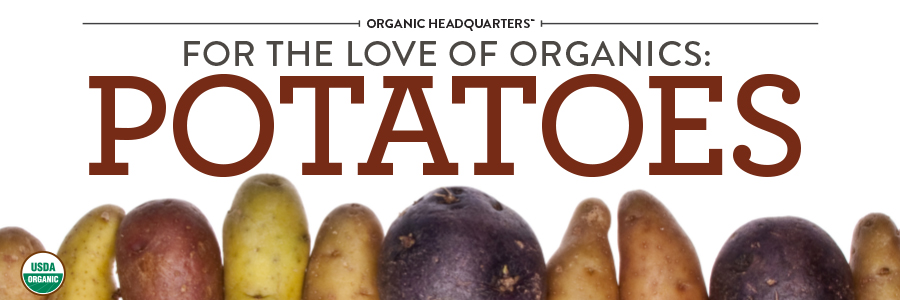


Sign-up for {N}power to get exclusive discounts, newsletters, members-only features, and more!
 Denver - Design District - Alameda and Broadway
Denver - Design District - Alameda and Broadway
368 S Broadway
Denver, CO 80209
United States
 Preferred Store:
Select a Store
Preferred Store:
Select a Store

Mashed, roasted, au gratin—potatoes are the perfect complement to a crisp October evening, and a very good thing indeed, when you know how to choose them, and the healthiest ways to use them.

The potato sometimes gets a bad rap when it comes to healthy eating (looking at you, French fries and potato chips). However, this hearty veg has been a valuable source of nutrition for centuries. Key nutrients include vitamin B6, potassium, and vitamin C, as well as beneficial phytonutrients like the carotenoids lutein and zeaxanthin, and anthocyanins that are found in the purple and red varieties.1 2 3 If you enjoy your potatoes with the peel intact, you'll take advantage of their fiber content, and here's a bonus for potato salad lovers: When they're cooked and then cooled, they form a type of resistant starch that feeds friendly microbes in your gut.4 5 6 7
In 2018, potatoes received a new kind of distinction—they were transferred from the Non-GMO Project’s “moderate-risk” list to the “high-risk” list because a genetically engineered variety of russet potato is now commercially available in the U.S.8 When you choose certified organic potatoes, you don’t have to think twice about GMOs, because they are never allowed in organic production.9
Spuds are regularly on the Environmental Working Group’s annual Dirty Dozen list of produce with the most pesticide residue, and USDA tests have found residues of 35 different pesticides on potatoes, including six known or probable carcinogens.10 11 Equally concerning are the unintended consequences of the pollinator killing neonicotinoid insecticides frequently used in growing them.12 A study, published in the journal PLOS One, discovered that low levels of the neonicotinoid thiamethoxam were leaching into groundwater near potato fields in Wisconsin. Here’s the kicker—that water was used for irrigation, and the thiamethoxam was inadvertently being re-applied directly back to crops. The study concluded that the recycling of these insecticides via irrigation “may have considerable unanticipated or undocumented environmental impacts for non-target organisms.”13 Synthetic pesticides that contaminate crops, soil, and water are not allowed in organic farming.14
Pesticide drift may not end up as residue in your grocery basket, but it pollutes air and water and poses health risks and quality of-life impacts to farming communities. You may seldom hear of the fumigant 1,3-dichloropropene (1,3-D) and the fungicide chlorothalonil, the silent toxins frequently used to grow conventional potatoes. Both are volatile, meaning that they dissipate into the air as gases, moving downwind of fields and lingering in the breathing space of nearby communities.15 The California Department of Pesticide Review (DPR) reported, after four years of measuring 1,3-D in the air around the farming town of Shafter, that levels of exposure over a lifetime of living there would exceed the DPR’s cancer risk regulatory goal by 1.7 times.16 17 Meanwhile, in central Minnesota, where 50,000 acres of potatoes are grown, chlorothalonil is used on 83 percent of the fields. It's classified by the EPA as a "probable" human carcinogen and "highly toxic" when inhaled, and it has been detected in the air in the towns that are near potato fields. Especially problematic is how little is known about the long-term effects of routinely inhaling a cocktail of synthetic pesticides.18 19 20
There are countless very good ways to enjoy potatoes, but only one way to ensure that they are grown in a manner that is accountable for environmental and human health impacts—certified organic!



Sign-up for {N}power to get exclusive discounts, newsletters, members-only features, and more!
